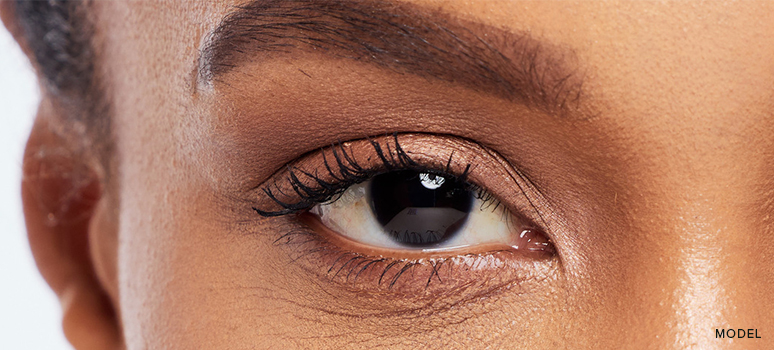Are you considering a brow lift to refresh your appearance but are unsure what the recovery process involves? Or have you recently undergone the procedure and want detailed guidance to ensure a smooth and successful healing experience? Understanding the recovery process is essential for achieving the best results while minimizing discomfort. This comprehensive guide, based on expert advice, will take you through each stage of recovery, providing practical tips and vital information to help you confidently manage your post-operative care.
At Memorial Plastic Surgery in Houston, Texas, patient well-being and outstanding results are our top priorities. A clear understanding of the recovery process is crucial for achieving success. This article outlines what to expect—from the first days after surgery to the months ahead when your refreshed, rejuvenated look will fully develop.
Understanding the Brow Lift Procedure: A Brief Overview
Before discussing recovery, it’s helpful to understand the different brow lift techniques, as these can affect your healing process. A brow lift, or forehead lift, aims to restore a youthful, refreshed look by addressing sagging brows, deep forehead wrinkles, and frown lines. The technique selected depends on your unique anatomy and cosmetic objectives.
Common brow lift techniques include:
Open Brow Lift: The traditional approach with a single, continuous incision across the forehead, typically at or behind the hairline. This method allows direct access for significant repositioning of the brow and forehead tissues.
Endoscopic Brow Lift: A minimally invasive technique using several small incisions concealed within the hairline. A small camera (endoscope) is inserted through one incision for visibility, while other instruments lift and secure the brow tissues.
Temporal Brow Lift (Lateral Brow Lift): This method targets the outer brow and involves incisions at the temples, hidden in the hairline. It primarily treats sagging in the outer brow and can be done alone or alongside other procedures.
Regardless of the technique, the objective remains the same: to lift the brow, smooth forehead lines, and achieve a more youthful, alert expression.
The Brow Lift Recovery Timeline: What to Expect Week by Week
Recovery from a brow lift is gradual, with visible improvements emerging at different stages. While healing times vary per individual, understanding the typical timeline can help you prepare and set realistic expectations.
Days 1-7: The Initial Healing Phase
The first week after surgery is usually the most intensive phase of recovery.
- Swelling and Bruising: Significant swelling and bruising around the forehead, eyes, and occasionally the cheeks are common. These symptoms are normal and will gradually diminish.
- Discomfort: Tightness, numbness, or mild to moderate pain are typical. Pain medication will be prescribed to keep you comfortable.
- Dressings and Drains: Bandages around your head and, in some cases, small drains to remove excess fluid might be used. These are usually removed within a few days.
- Activity: Rest is essential. Keep your head elevated at all times, including during sleep, to minimize swelling. Avoid strenuous activity, bending, or lifting heavy items.
Tip: Use soft gel packs or cold compresses on swollen areas as directed by your surgeon to reduce swelling and bruising. Maintain head elevation with extra pillows while resting or sleeping.
Weeks 1-2: Noticeable Improvement
By the end of the first week continuing into the second, you’ll notice a significant reduction in swelling and improved comfort.
- Reduced Swelling and Bruising: Swelling and bruising will fade considerably and may be masked with light makeup if desired.
- Suture Removal: Non-dissolvable sutures are usually removed during your follow-up appointment within this timeframe.
- Gradual Return to Light Activities: Light activities like short walks can typically be resumed. Avoid strenuous exercise, heavy lifting, and bending to prevent stress on the surgical site.
- Return to Work: Many patients return to work within one or two weeks, particularly with non-physical jobs. Recovery timing may vary based on the procedure performed.
Tip: Adhere strictly to incision care instructions to encourage healing and reduce scarring. Keep incision areas clean and dry.
Weeks 2-3: Increasing Independence
By the third week, most patients feel much more like themselves and can take on more routine activities.
- Driving: Resume driving only after discontinuing narcotic pain meds and once mobility and reaction time are normal. Confirm with your surgeon before driving again.
- Increased Mobility: Tightness lessens and facial movement improves steadily.
Weeks 3-4: Approaching Normalcy
By the end of the first month, most patients feel a significant return to their normal routine, with some lingering restrictions.
- Daily Activities: Most light daily activities can be resumed with minimal restrictions.
- Exercise: Continue to avoid strenuous physical activity. Listen to your body and avoid anything that causes pain or discomfort in the surgical area.
Weeks 6-12: Gradual Return to Full Activity
This period marks the time when you can typically reintroduce more vigorous activities.
- Physical Activity: You can gradually increase your physical activity levels. By the end of this 6 to 12-week window, you should be cleared by your surgeon to return to strenuous activities such as working out, running, tennis, and yoga.
- Scar Maturation: Incisions will continue to fade and soften.
Months 3-6: Final Results Emerge
While initial results are visible sooner, the true, refined outcome of your brow lift will continue to emerge over several months.
- Final Results: As swelling completely resolves, and the brow settles into its new, elevated position, the final results of your brow lift will become apparent. Scars will continue to mature and become less noticeable, often blending seamlessly with the surrounding skin.
Essential Brow Lift Recovery Tips for Optimal Results
Beyond the timeline, adhering to specific care instructions is paramount for a smooth recovery and achieving the best possible aesthetic outcome from your brow lift.
- Elevate Your Head: This is perhaps the most crucial tip for managing swelling. Keep your head elevated above your heart at all times, including while sleeping, for at least the first one to two weeks. Use several pillows or sleep in a recliner.
- Apply Cold Compresses: Using cold compresses or soft gel packs (never ice directly on the skin) can significantly reduce swelling and bruising in the initial days. Follow your surgeon’s recommendations for frequency and duration.
- Restrict Activity: Avoid any activities that could raise your blood pressure or put strain on your surgical site. This includes bending over, heavy lifting, strenuous exercise, and even activities that require significant head movement. Gradually reintroduce activities as cleared by your surgeon.
- Incision Care: Meticulously follow your surgeon’s instructions for caring for your incisions. This typically involves gentle cleaning and applying any prescribed ointments. Proper incision care is vital for preventing infection and promoting optimal scar healing.
- Avoid Smoking and Alcohol: Both smoking and alcohol can impair your body’s healing process and increase the risk of complications. Avoid them completely during your recovery period.
- Stay Hydrated and Eat Nutritious Food: A healthy diet rich in vitamins and protein, along with plenty of water, supports your body’s natural healing mechanisms.
- Protect from Sun Exposure: Sun exposure can darken healing scars. Once your incisions are fully closed, apply a high-SPF sunscreen to protect the area.
- Attend Follow-Up Appointments: Your post-operative appointments are essential. Your surgeon will monitor your healing progress, remove sutures, and provide personalized advice.
- Be Patient: Healing takes time. Do not compare your recovery to others, and understand that some swelling and numbness can persist for several weeks or even months. Trust the process and your body’s ability to heal.
- Communicate with Your Surgeon: If you have any concerns, questions, or notice anything unusual during your recovery, contact Memorial Plastic Surgery immediately. Early communication can prevent complications and provide peace of mind.
Potential Side Effects and When to Seek Medical Attention
Undergoing a brow lift is an investment in your appearance and self-confidence. While the recovery period requires patience and diligence, the long-term benefits are well worth the effort. A successfully recovered brow lift can:
- Create a more alert and refreshed appearance.
- Reduce the appearance of deep forehead wrinkles and frown lines.
- Elevate sagging eyebrows, making the eyes appear more open and youthful.
- Contribute to an overall harmonious facial aesthetic.
Many patients report feeling more confident and pleased with their rejuvenated look, which often reflects how they feel internally.
Conclusion: Embrace Your Brow Lift Recovery Journey
A brow lift can greatly rejuvenate your appearance, but the key to achieving the best results lies in a dedicated, informed recovery. By carefully following your surgeon’s instructions, prioritizing rest, and remaining patient with your body’s healing, you set the stage for a beautiful, lasting outcome.
The expert team led by Dr. Tyler McElwee at Memorial Plastic Surgery in Houston, Texas, is committed to supporting you through every step of your brow lift journey, from initial consultation to complete recovery. With their guidance and your commitment to proper post-operative care, you can look forward to enjoying the revitalized and youthful appearance you desire.
If you’re considering a brow lift or have questions about the recovery process, reach out to a board-certified plastic surgeon. Your journey to a more youthful gaze starts with preparation and ends with stunning, natural-looking results. Schedule a consultation today




